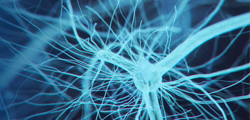News Release
Merz Therapeutics Announces First Patients Enrolled in Two Phase III Trials Investigating XEOMIN® (incobotulinumtoxinA) for Migraine Prevention
25/08/2025
- Trials designed to reflect migraine burden and patient experience
- Merz Therapeutics continues to build on established neurotoxin expertise
Frankfurt, Germany | Raleigh, N.C. – August 25, 2025 – Merz Therapeutics GmbH, a leading player in neurology-focused specialty pharma, today announced that the first patients have been enrolled in two global Phase III clinical trials — MINT-E (NCT07018700) and MINT-C (NCT07018713) — evaluating the efficacy and safety of XEOMIN® (incobotulinumtoxinA) for the prevention of episodic and chronic migraine in adults. Migraine affects around 1.1 billion people worldwide, posing a significant burden on patients and healthcare systems.1
“Despite the availability of multiple treatment options, the need remains for additional options for prevention of migraines,” says Stefan König, CEO, Merz Therapeutics. “The enrollment of the first patients in the MINT trials marks an important milestone as we aim to address persistent gaps in migraine care by advancing a new neurotoxin option for patients.”
The trials will enroll approximately 1,770 adult patients across 120 study sites in North America and Europe.
- MINT-E will include approximately 990 participants with episodic migraine (defined as less than 15 headache days per month, of which six to 14 are migraine days per month)
- MINT-C will include approximately 780 participants with chronic migraine (defined as more than 15 headache days per month, of which more than eight are migraine days)
Both trials will evaluate the change in monthly migraine days from baseline to Month 6 as the primary endpoint. Secondary endpoints include changes in monthly headache days, acute medication days, and migraine frequency during two-week periods at the end of each injection cycle.
Patient enrollment is underway, with sites now active across North America. Recruitment in Europe is expected to follow shortly. The trials will proceed in accordance with regulatory guidelines, including those of the U.S. Food and Drug Administration and study readiness milestones.
“These trials were designed with the patient experience at the forefront — from trial design and eligibility criteria that reflect current migraine patterns to endpoints that capture the full impact of migraine on daily life,” said Stefan Albrecht, Chief Scientific and Medical Officer, Merz Therapeutics. “By ensuring representation across both episodic and chronic migraine, we aim to generate data that is not only clinically robust but also deeply relevant to the people we hope to serve.”
Understanding the Impact of Migraine
Migraine is characterized by recurrent attacks of moderate to severe head pain, often accompanied by nausea, vomiting, and sensitivity to light and sound.2 Attacks can last from four to 72 hours and may be preceded by aura — visual or sensory disturbances that signal onset.3 Episodic migraines affect people fewer than 15 days a month, while chronic migraines occur 15 or more days monthly for at least three months, often with more severe, disabling symptoms. Chronic migraine can have a greater impact on daily life and may require more specialized treatment.4
Beyond physical symptoms, migraine is associated with significant emotional, cognitive, and social burden. It frequently co-occurs with depression, anxiety, and sleep disorders, and contributes to reduced quality of life, impaired productivity, and increased healthcare utilization.5
About XEOMIN®
XEOMIN® (incobotulinumtoxinA) is a prescription medicine that is injected into muscles or glands and used to treat adults and pediatric patients with chronic drooling (sialorrhea), adults with eyelid spasm (blepharospasm) and spasm in one side of the face (hemifacial spasm), twisted neck (spasmodic torticollis), and spasticity of the upper limb.
XEOMIN® is currently approved in more than 80 countries, including US and Canada, for the treatment of various neurological and aesthetic conditions. The use of XEOMIN® for migraine prevention, including prevention of episodic and chronic migraine in adults, is not yet approved by regulatory authorities.
About Merz Therapeutics
Merz Therapeutics GmbH is dedicated to delivering better outcomes for more patients. With science as its foundation and the patient experience as its focus, the company relentlessly pursues innovative treatments and partnerships to address unmet needs in movement disorders, neurodegenerative conditions, liver disease, and other health conditions that severely impact patients’ quality of life.
Merz Therapeutics is headquartered in Frankfurt am Main, Germany, and is active in more than 80 countries. Merz Therapeutics GmbH is part of the Merz Group, a privately held, family-owned company with a 117-year legacy. With passion and purpose, Merz Therapeutics continues to advance care in specialty neurology in ways that benefit both patients and society.
Please visit www.merztherapeutics.com.
References
- Cen, J., Wang, Q., Cheng, L., Gao, Q., Wang, H., & Sun, F. (2024, June 7). Global, regional, and national burden and trends of migraine among women of childbearing age from 1990 to 2021: Insights from the Global Burden of Disease Study 2021. The Journal of Headache and Pain. https://doi.org/10.1186/s10194-024-01798-z
- Dong, L., Dong, W., Jin, Y., Zhang, L., & Li, H. (2025). The global burden of migraine: A 30-year trend review and future projections by age, sex, country, and region. Pain and Therapy. https://doi.org/10.1007/s40122-024-00690-7
- Gupta, J., & Gaur, S. (2022, August 24). Migraine: An underestimated neurological condition affecting billions. Cureus. https://doi.org/10.7759/cureus.28347
- Chronic Migraines vs. Episodic Migraines: Key Differences and Treatments, Princeton & Rutgers Neurology, accessed July 18, 2025, https://www.psneurology.com/posts/chronic-migraines-vs-episodic-migraines-key-differences-and-treatments/
- López-Medina, D. C., & Andrade-Romo, A.-D. (2025, March 14). Cognition, mental health, and quality of life in patients with chronic and episodic migraine during the interictal period. BMC Neurology. https://doi.org/10.1186/s12883-025-04122-7
This press release is not intended to offer recommendations, advice, endorsement, guidance or suggestions for administering or otherwise using Xeomin® in any manner inconsistent with its current prescribing information approved by the U.S. Food and Drug Administration.
Press Contacts:
International media
Merz Therapeutics GmbH
Luke Anthony Mircea-Willats
Global Communications






